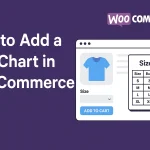Running an online store is exciting — until it turns into a daily firefight of order management, customer emails, inventory checks, abandoned carts, and marketing tasks. That’s when reality hits: to grow your e-commerce business, you need more than just hustle — you need automation.
E-commerce automation is the smart seller’s secret weapon. It allows you to automate repetitive tasks like order fulfillment, inventory updates, email campaigns, customer segmentation, invoicing, and even returns. Instead of burning out while juggling tasks, you can focus on building your brand, curating new products, and keeping your customers engaged. With the right software for e-commerce automation, even a small team can operate like a well-oiled enterprise.

What is E-commerce Automation and How Does It Work?
Let’s break it down simply — e-commerce automation is when software takes care of tasks that you’d normally have to do manually. Think of it like hiring an invisible assistant who works 24/7 without breaks or burnout. You can create “if-this-then-that” workflows to handle actions like sending personalized emails, updating stock levels across channels, syncing shipping information, and flagging high-risk transactions.
Automation isn’t just about saving time. It’s about reducing human error, improving customer satisfaction, and scaling your operations without increasing overheads. The beauty is that many automation tools are plug-and-play, meaning you don’t need to be a tech wizard to use them. Whether you’re a newbie dropshipper or a seasoned e-commerce pro, there’s a tool tailored for your business model.
Also Read: How to Edit the WooCommerce Cart Page
ActiveCampaign
When it comes to automating customer communication, ActiveCampaign is an absolute powerhouse. Though it’s widely known for email marketing, this platform goes way beyond newsletters. It enables online stores to create intelligent automations based on customer behavior, purchase history, and browsing habits.
From sending a welcome email to triggering a cart abandonment flow or segmenting your audience based on engagement, ActiveCampaign makes your brand feel human at scale. The interface is intuitive, and the visual automation builder allows you to map customer journeys without writing a single line of code. For any e-commerce store focused on building lasting relationships, ActiveCampaign is a must-have.
Zapier
If e-commerce automation had a magic wand, it would be called Zapier. This tool connects all your favorite apps — Shopify, WooCommerce, Gmail, Slack, Google Sheets, and hundreds more — so they can talk to each other automatically.
With Zapier, you can create “Zaps” (automated workflows) like sending order data to a spreadsheet, alerting your team on Slack when stock runs low, or automatically adding new customers to your CRM. It’s especially handy for solopreneurs or small teams who want to stitch together different platforms without hiring a developer. If you’re overwhelmed by software chaos, Zapier helps you bring everything into sync.
Omnisend
For online stores looking to level up their marketing automation, Omnisend is a dream come true. It specializes in omnichannel communication — which means you can combine emails, SMS, push notifications, and Facebook Messenger into one automated campaign.
Omnisend’s strength lies in how easy it is to build high-converting workflows. Whether it’s a post-purchase thank-you message, a re-engagement sequence, or a birthday discount — it’s all drag-and-drop. Plus, it integrates natively with Shopify, BigCommerce, and WooCommerce. If you want to deliver a seamless customer experience across multiple touchpoints, Omnisend keeps it all connected.
ShipStation
Logistics is where many e-commerce businesses trip up. Fortunately, ShipStation helps you automate everything related to shipping — from label printing and tracking updates to managing returns.
It integrates with over 100 platforms and carriers, including Amazon, eBay, Shopify, USPS, FedEx, and UPS. You can create rules to assign carriers, choose shipping rates, and batch-process hundreds of orders in minutes. ShipStation’s dashboard gives a bird’s-eye view of all your shipments, helping you stay on top of fulfillment with zero fuss. If shipping is your bottleneck, this is the solution that untangles the mess.
Klaviyo
Klaviyo has quickly become the go-to marketing automation tool for e-commerce brands that want results-driven email and SMS campaigns. Its power lies in its data-driven approach — it doesn’t just let you send emails, it helps you send the right ones at the right time.
Thanks to deep Shopify and WooCommerce integrations, Klaviyo can track every click, browse session, purchase, and even on-site behavior. You can build segments, trigger flows based on real-time events, and A/B test your content. Klaviyo’s dashboards also provide rich analytics, so you can measure performance down to the dollar. It’s ideal for growth-focused stores looking to make smarter marketing moves.
Also Read: How to Add Sticky Add To Cart in WooCommerce
Skubana
As your e-commerce business scales, you’ll need more than just basic automation — you’ll need operational automation. Enter Skubana. This platform is built to manage your entire backend, from inventory and purchase orders to forecasting and order routing.
Skubana integrates with your sales channels, warehouses, and suppliers. It provides real-time analytics and helps you identify your most profitable products and channels. By automating complex supply chain workflows, Skubana saves time and boosts margins. It’s not the cheapest solution, but for high-volume sellers, it pays for itself with pure operational efficiency.
ReCharge
If your e-commerce business includes subscriptions, then ReCharge is your go-to automation platform. It integrates directly with Shopify and helps you manage every aspect of subscription selling — from recurring payments and customer accounts to churn reduction workflows.
The beauty of ReCharge lies in how customizable it is. You can automate billing, offer flexible shipping schedules, and even enable customers to manage their own subscriptions through a self-service portal. ReCharge also supports upsells and loyalty rewards, making it a powerful ally in increasing customer lifetime value.
Orderhive
Orderhive is a lesser-known gem that offers a suite of automation tools focused on inventory, shipping, and order management. It’s great for sellers managing multiple warehouses, sales channels, and fulfillment workflows.
The software syncs your stock in real-time across platforms like Amazon, eBay, Shopify, and Magento. You can set rules for purchase orders, dropshipping, and backorders, and even automate invoicing and returns. Orderhive brings clarity to your backend without drowning you in data, making it ideal for growing stores that need serious structure.
Alloy Automation
Alloy is relatively new in the space but is rapidly earning a name for itself with its powerful yet easy-to-use automation builder. It’s built specifically for e-commerce stores and works seamlessly with Shopify, BigCommerce, Klaviyo, Gorgias, and many other e-commerce apps.
Think of Alloy as a no-code automation playground. You can create custom workflows like tagging VIP customers, assigning support tickets, syncing product reviews, and sending follow-up texts — all without writing a single line of code. If you want flexibility without complexity, Alloy delivers smart automation without overwhelm.
Webgility
If accounting and data syncing stress you out, Webgility comes to the rescue. This platform connects your store with accounting software like QuickBooks and Xero, and automates all the tedious data entry between them.
Webgility pulls in your sales data, syncs inventory, tracks expenses, and even helps reconcile payments. For store owners tired of dealing with spreadsheets and tax season nightmares, Webgility is a game-changer. It’s especially useful for multi-channel sellers who need all their financial data in one reliable place.

Automation is the Bridge Between Hustle and Scale
In the fast-moving world of e-commerce, automation isn’t just a productivity hack — it’s your survival strategy. The competition is fierce, customers expect lightning-fast service, and the tasks never end. That’s why investing in the right software for e-commerce automation can be the difference between burnout and breakthrough.
Whether it’s syncing orders with ShipStation, automating emails through Klaviyo, or using Zapier to connect your tools, each piece of software frees you from repetitive tasks and lets you focus on what actually grows your business. If you’re just getting started, begin with a few core automations. As your store expands, scale your tech stack accordingly. Remember, smart work beats hard work — and automation is as smart as it gets.
Interesting Reads:
How to Add Trust Badges to WooCommerce Websites



